How to Fix (Klif.sys) Blue Screen of Death in Windows?
Microsoft provides its own security and protection to all Windows systems, eliminating the need to rely on third-party programs like Kaspersky. In fact, instead of protecting your system from harm, they can very much be a potential threat to your computer, like causing the Klif.sys blue screen error.
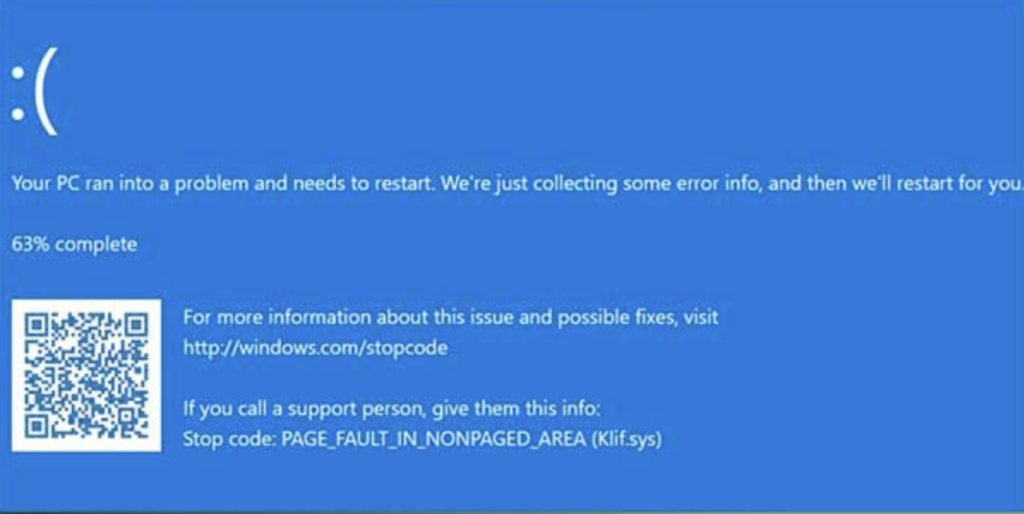
Although it is directly related to the usage of Kaspersky Lab Intruder Filter, a component of the antivirus program that protects against malicious sites, phishing, and the like, it ironically results in sudden fatal errors that harm your computer. The best way to address this is to remove the external security program. If that is not feasible, there are several additional solutions to this issue.
So let’s take a look!
What Causes the Klif.sys Blue Screen Error
The best way to know which fix is the most effective for you is by determining the root cause of the problem. Here are several reasons why this BSOD error can appear on your device:
- Corrupted drivers: The most common reason of this blue screen error is an issue within the Klif.sys driver. If it is damaged or corrupted, it can lead to various errors on your computer such as the stated one.
- Incompatible Windows update: Sometimes, installing a Windows update on your PC may cause the Klif.sys Blue Screen error. This is primarily because the Windows update is incompatible with the Klif.sys driver file.
- Other programs interference: Certain security programs also interfere with your system’s drivers, resulting in the blue screen error. By identifying such software and removing them, you can overcome this issue.
Now that we know the potential causes of this problem, lets start fixing this problem!
Follow the steps down below to fix the issue.
Solution 1. Remove the Klif.sys from your PC
This solution involves removing the problematic Klfi.sys driver from your PC by booting into safe mode.
Step 1. Boot Into Safe Mode
If the blue screen fatal error prevents you from booting into Windows normally, you would first need to enter Safe Mode.
For this:
- Boot up your computer.
- At the sign-in screen, click on the Power icon and choose Restart while holding down the Shift key.
- When the Choose an Option screen appears, select Troubleshoot.
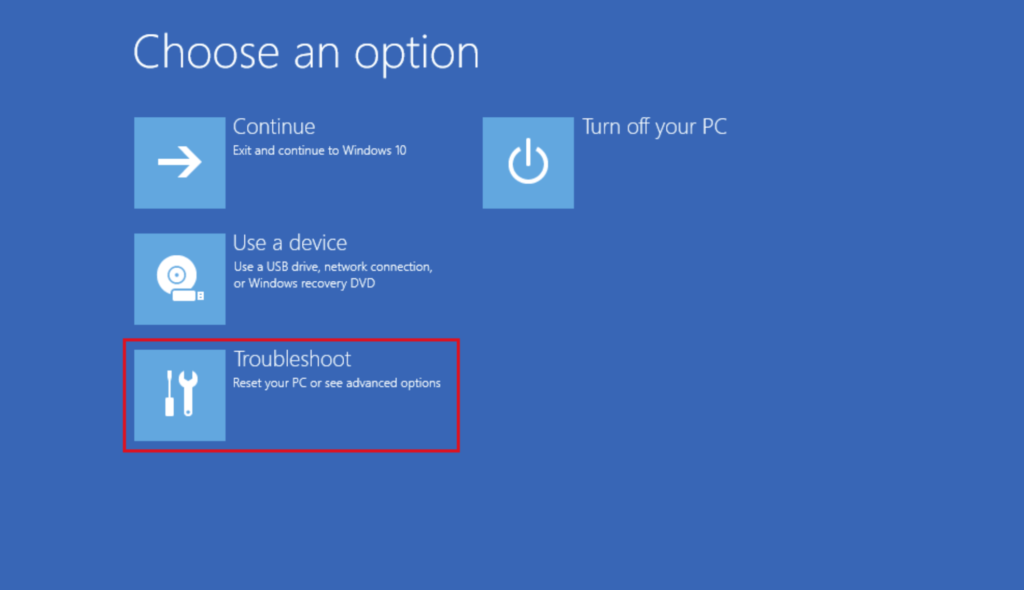
- Go to Advanced Options > Startup Settings > Restart.
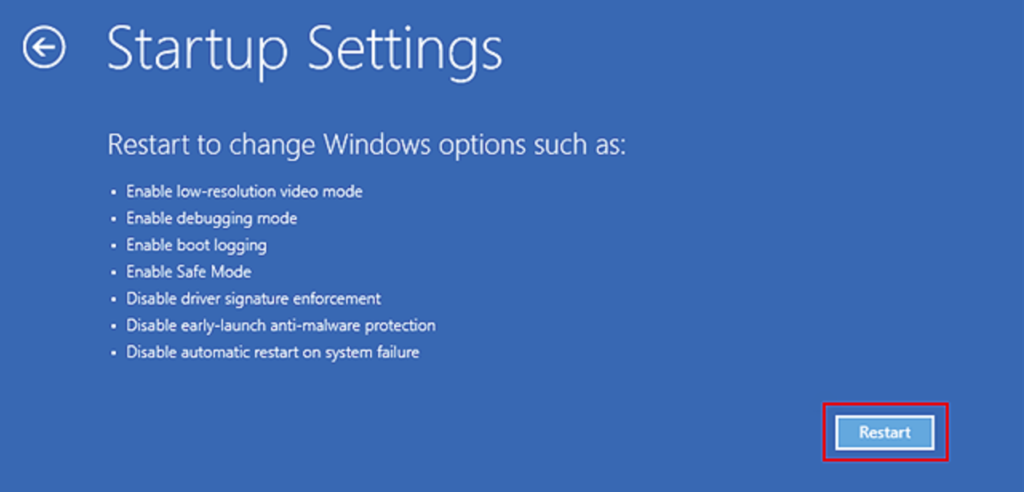
- Upon restart, a few options should appear on the screen. Press 4 or F4 to enter Safe Mode or 5 or F5 to enter Safe Mode with Networking.
Step 2. Remove Klif.sys File
To begin, it’s safer to assume that the Klif.sys file has been damaged or corrupted, resulting in the BSOD error. In that situation, the best solution is to remove the file from your computer so that it stops conflicting with the entire system.
Follow the steps below to do so:
- First, launch the Run dialog box by pressing the Windows + R keys from your keyboard.
- Then, in the text field, type the following path and press the Enter key:
C:\Windows\System32\drivers- Once the file explorer opens, locate the Klif.sys file and select Delete.
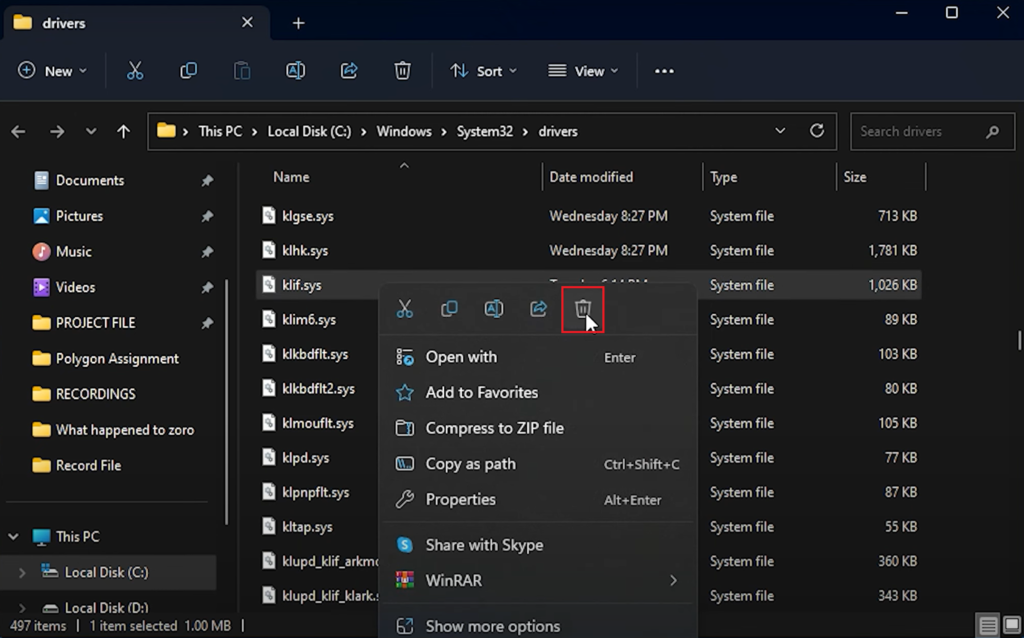
- Now, paste the following path in the Run window and click on OK:
C:\Windows\System32\DriverStore- Once again, select the Klif.sys file and click on Delete.
Solution 2. Switch From Beta to Stable Kaspersky Version
The beta version of most programs, since they’re in their experimental stage, contains various bugs and glitches. So, if you’re running a beta version of any of the Kaspersky programs, it could possibly be the reason for the blue screen error.
For the safe side, it’s recommended to move to a stable version in that situation. However, if you’re already using a stable version and still experiencing the stated issue, try out more of the fixes below.
Solution 3. Perform System Scans
In case the blue screen error hasn’t been resolved up till now, the damage could be on the Windows Image files. Fortunately, Microsoft has several in-built command-line scans that you may perform to repair and replace these damaged files.
In this case, you need to perform an SFC scan followed by a DISM scan to resolve the issue. Here’s how it’s done:
- Click on the Search icon from the taskbar and type cmd.
- Then, select Run as administrator from the left pane.
- To run an SFC scan, enter the following command:
sfc/scannow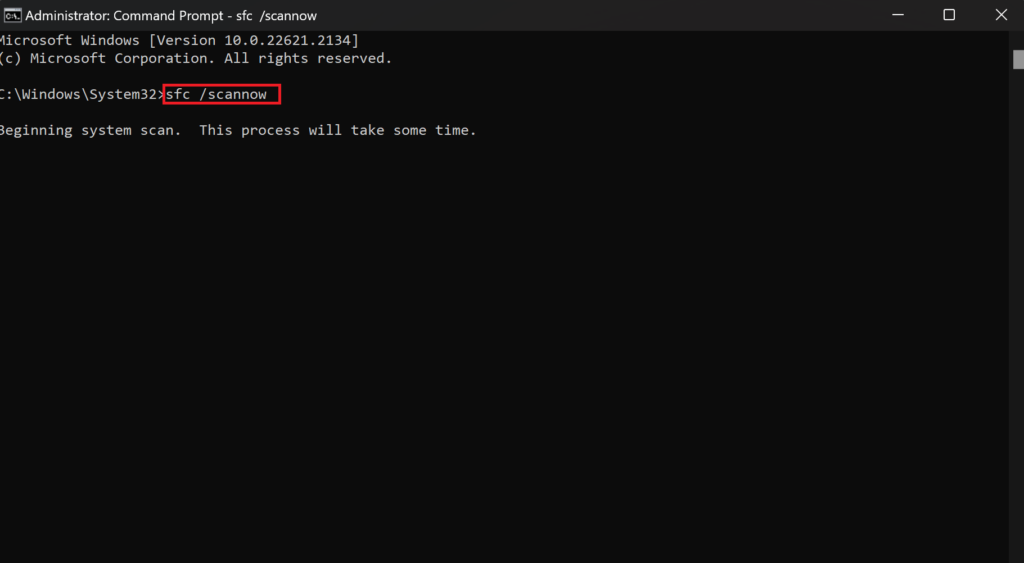
- Once the scan is complete, run the following commands one by one:
DISM /Online /Cleanup-Image /CheckHealthDISM /Online /Cleanup-Image /ScanHealthDISM /Online /Cleanup-Image /RestoreHealth- Wait for the scan to complete, then restart your PC.
Solution 4. Uninstall Kaspersky
Since the issue mainly arises due to installing Kaspersky on your computer, it will only get resolved once you remove this third-party antivirus program once and for all. In fact, you never needed it in the first place. The built-in Windows Defender is enough to keep your system secure and protected.
Here’s how to uninstall Kaspersky from a Windows computer:
- Visit the official Kaspersky website and download the Kavremover tool.
- Once downloaded, double-click on the karemover.exe file to run the installer.

- On the UAC prompt that appears, click on Yes.
- In the window that opens, click on the Remove option. This will uninstall the Kaspersky software.
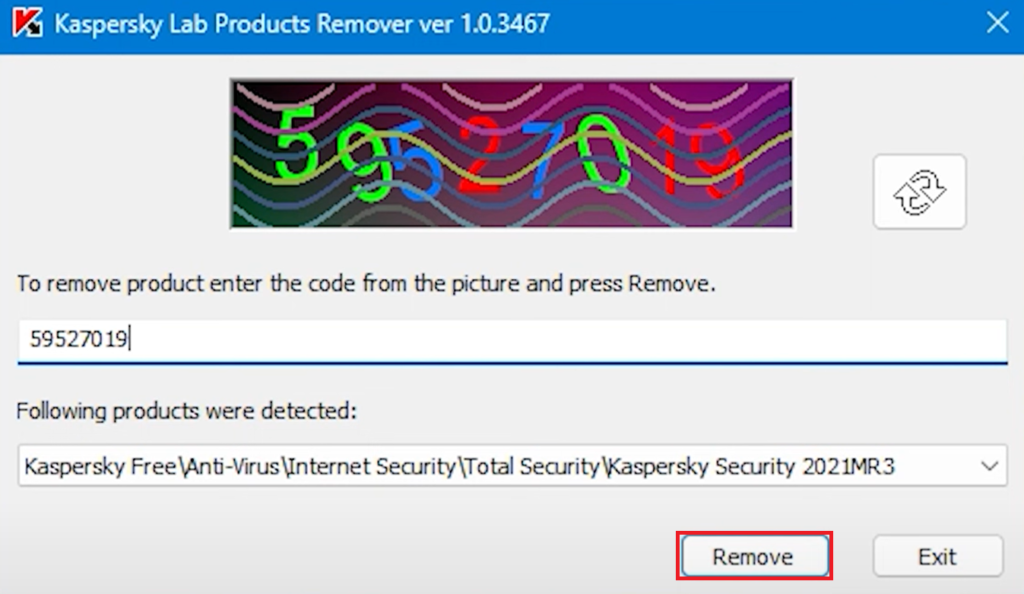
- Now restart your computer and see if the error has been fixed.
Solution 5. Uninstall Third-Party Antivirus Program
If you prefer to keep the Kaspersky Antivirus software at all costs, here’s another thing you may do. For many users, the issue occurred due to multiple such programs functioning simultaneously, resulting in a conflict. For this reason, it is highly recommended to rely on only one external security program and uninstall all others to avoid unnecessary crashes and fatal errors.
Follow these instructions to remove the program:
- Press the Windows key from your keyboard.
- Type Control Panel in the search bar.
- Then, click on Open from the left pane.
- Once the Control Panel window opens, click on Uninstall a program under Programs.
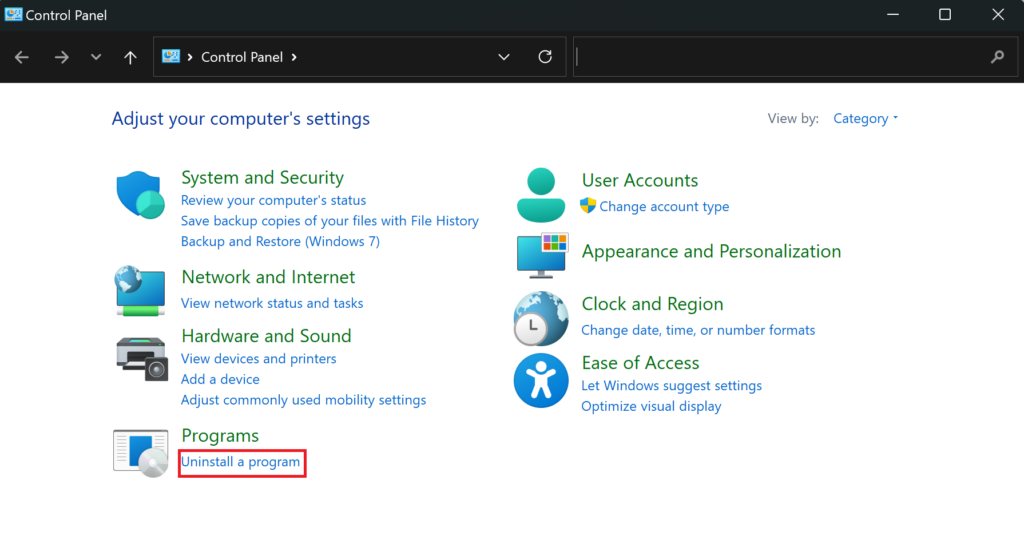
- From the list, select the antivirus program and click on the Uninstall option.
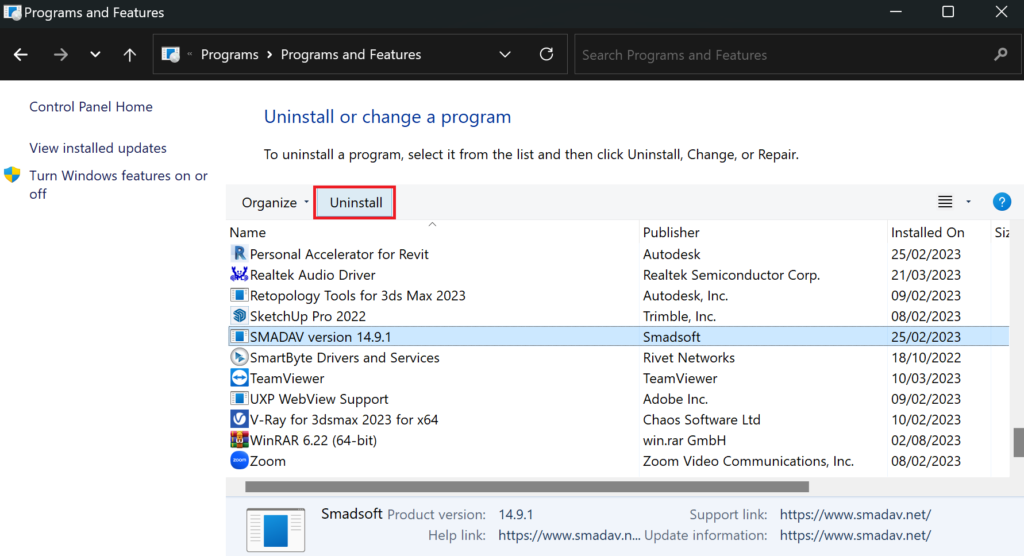
- Click on the Yes button to confirm your action.
Solution 6. Perform System Restore
If you’re not sure what’s triggering the blue screen error and would not prefer trying the fixes for the same reason, then this method is for you. If enabled, Windows’ System Restore tool saves several states of your system so that you can revert to that point and discard all the changes made afterward. It’s quite a handy feature especially if you end up encountering malware attacks or fatal errors such as the Klif.sys Blue Screen error.
Here’s what you need to do:
- Press the Windows + S keys and search for Control Panel.
- Then, click on the Open option.
- Set View by to Large icons.
- Now, click on Recovery.
- Then, select Open System Restore.
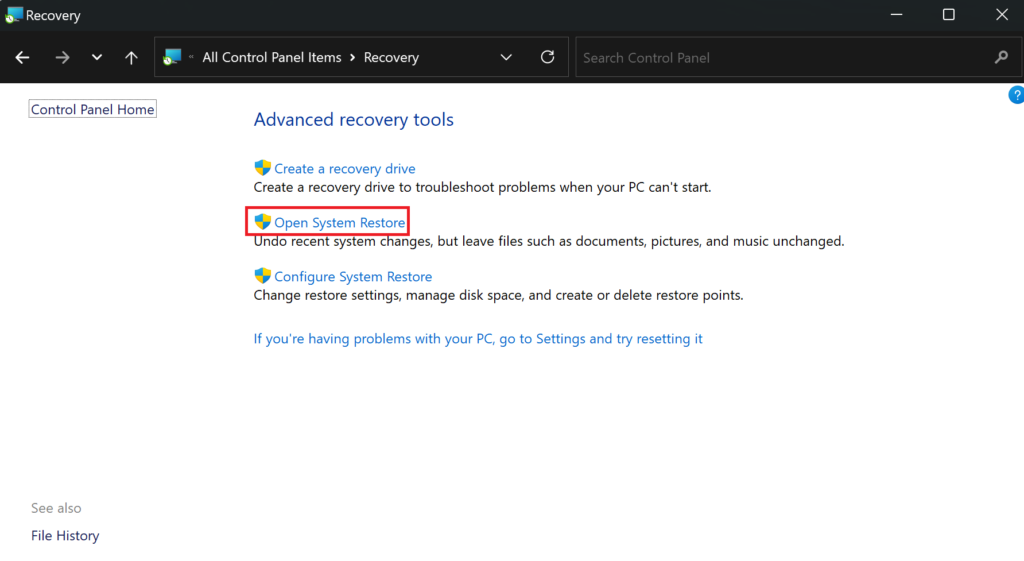
- Click on the Choose a different restore point option and select Next.
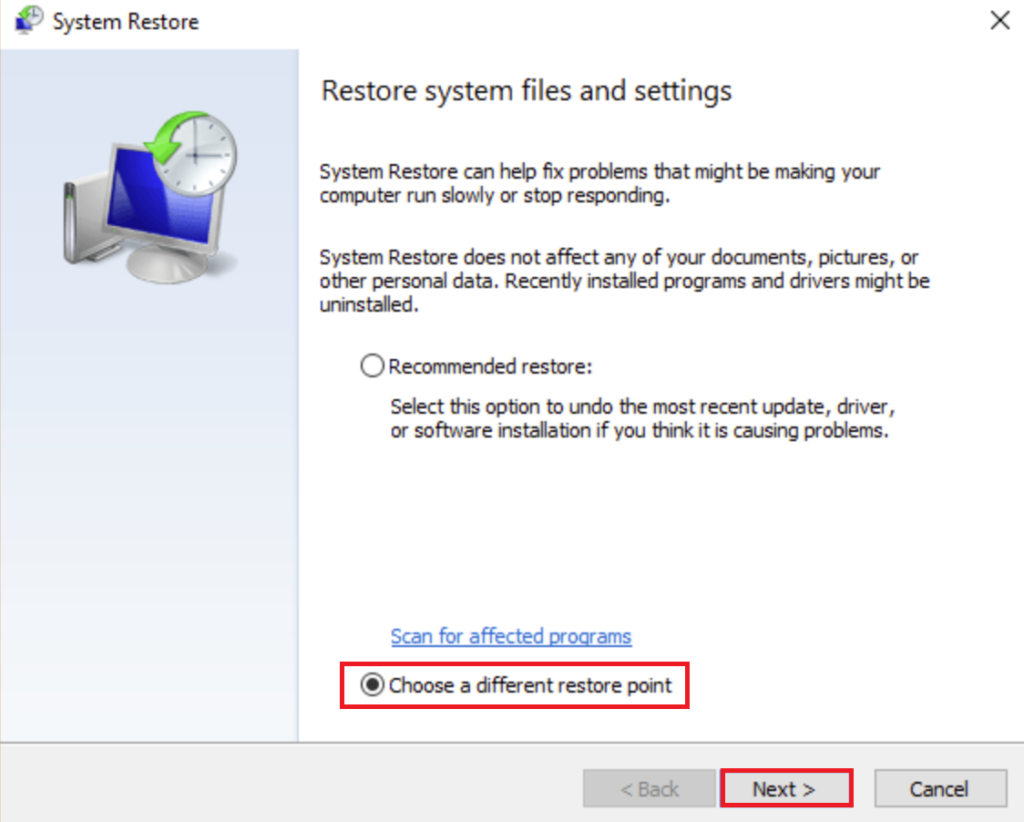
- From the list, select your desired restore point and click on Next.
- Lastly, click on the Finish button. This will automatically restart Windows and restore your system to the selected point.
Best Kaspersky Alternatives to Avoid the Blue Screen Error
Although Windows Defender is enough to provide security and protection to your computer against virus, malware, and trojans, some people would still need to install an external software for satisfaction. If you belong to the same group and unfortunately also encounter the Klif.sys blue screen error every now and then, here are some alternatives to Kaspersky.
Based on the security features and user reviews, Norton, Avast, and McAfee are among the most popular choices. All these antivirus programs offer excellent malware protection, along with advanced security tools and a user-friendly interface.
Klif.sys Blue Screen Error - FAQs
Installing Kaspersky Antivirus may result in a Blue Screen of Death for some users. The issue occurs due to a program’s component, conflict between the program with another app or drivers, a bug in its beta version, etc.
Yes, hardware problems can also cause a blue screen on your computer. This includes a faulty RAM, hard drive, motherboard, or processor. In this situation, you can run a memory test on your computer to fix memory-related issues.
 Reviewed by
Reviewed by 




